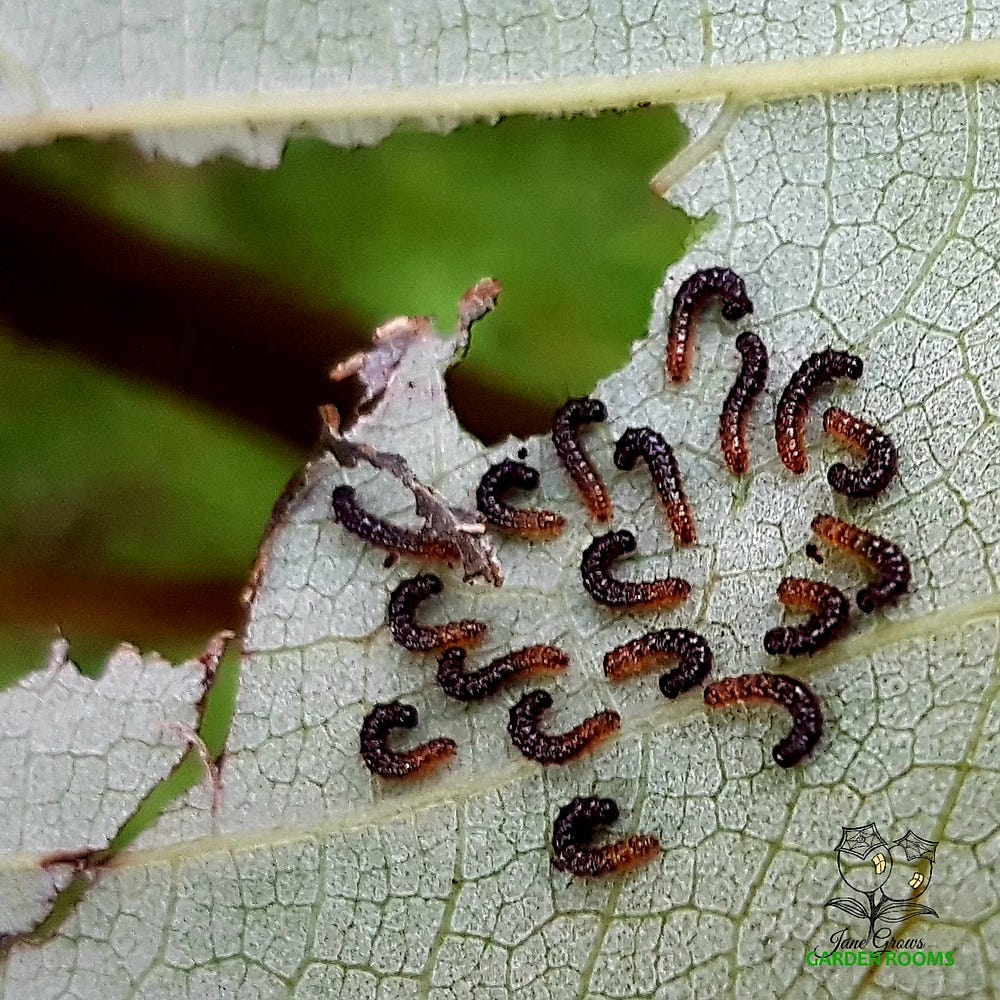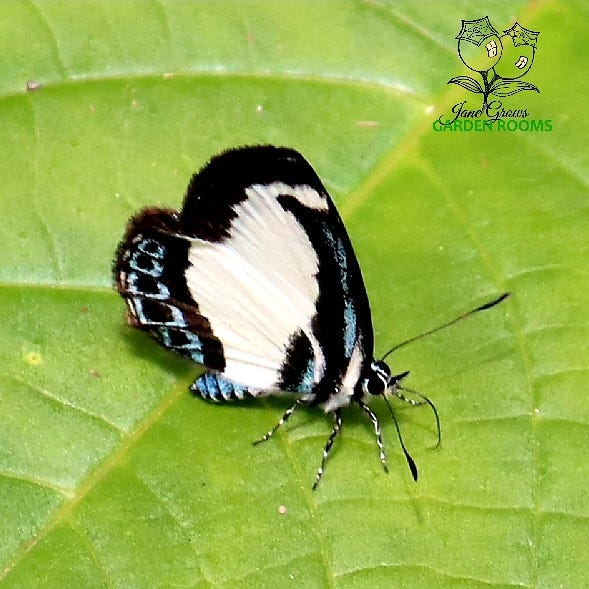We will know that the world has changed when we “like” caterpillars as much as we “like” butterflies.

I post a lot on social media. It’s usually photos from my garden or plant profiles or thoughts on ecosystems and sustainability. I’m passionate about it. One thing that I have noticed is that my butterfly posts get a lot more “likes” than my caterpillar posts or, for that matter, most “bug posts”. Why can’t we love them both the same?

For years we’ve been conditioned to think that caterpillars are pests that defoliate our plants and destroy our gardens. The birds don’t agree. For them they are an abundant food source. Did you know that when a pair of butterflies lays hundreds of eggs in a season, only two will mature to be viable adult butterflies? The rest miss the genetic lottery or are gobbled up by birds, spiders, reptiles, wasps and all the other predators in our gardens.
Remember that if nature is in balance, then every pair of adults will produce only 2 viable adults in the next generation. So if a female lays say 1,000 eggs, of which perhaps 500 hatch successfully into caterpillars, then on average 498 will die before reaching maturity.¹
And yet, for years we have celebrated the butterfly. We have butterfly houses as businesses, we use them as a base for art projects, we tell children stories about them, we post memes about butterflies and chrysalises. Essentially a caterpillar IS a butterfly. I find it amazing that people plant “butterfly gardens” and then kill all the caterpillars that are munching on the plants.

Nature is a huge complicated system and humans seem to think that we can ignore the parts of the system that are inconvenient or unattractive or undesirable. To my mind, it’s like having a baby and trying to ignore the dirty nappies. It’s a part of the process of that baby growing and maturing.
If we could “like” caterpillars as much as butterflies, we wouldn’t just be getting butterflies, we would also be allowing a more diverse ecosystem in our gardens. A few years ago I stopped all pest control in my garden, which was usually just picking off undesirables and feeding them to the fish in my pond. Are my plants now full of holey leaves? No, just a few. Am I overrun by pests? No. I do have more Lacewings, Dragonflies, Praying Mantises and other insect predators in my garden, not to mention insectivore birds.

Just this month I found half a dozen Orchard Swallowtail caterpillars devouring a Lemon Tree seedling. I held back and watched. They started to disappear. I wasn’t sure what was eating them. Then I saw a Kookaburra swoop down to the Lemon Tree and fly away with the very last caterpillar. Mystery solved! Sadly, no Orchard Swallowtail Butterflies from that brood, but that’s okay. I like Kookaburras too.
Learning to love caterpillars might also help us avoid the Insect Apocalypse that scientists are warning us about. While some deny this event, I find the case interesting, especially when I drive at night and my windscreen isn’t covered with splattered bugs. If the Insect Apocalypse happens, the consequences will be dire for all life on the planet. The battle to prevent it can start in our own gardens simply by using a “live and let live” policy.
When we learn to love the holes in the leaves and the caterpillars that create them, we will truly be a civilisation in metamorphosis. We will be recognising that all parts of the system are valuable and that we can’t have butterflies without the caterpillars and holey leaves.
¹Coffs Harbour Butterfly House: Caring for Caterpillars
This story was originally published in online publication Illumination on July 6th, 2021 by the same author.